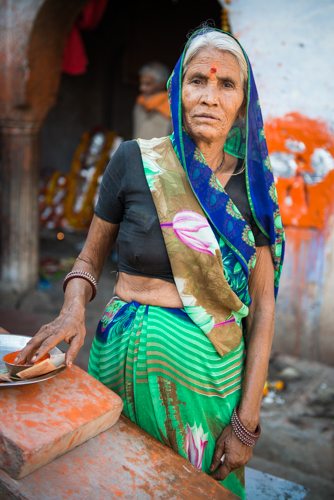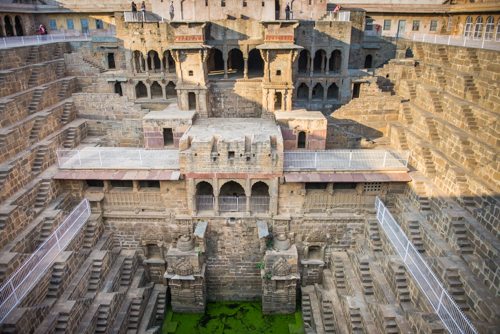She stood statue-still, waiting, her creased face emotionless as bees swarmed around her body. I felt drawn to her, as if she was the reason I was there.
Bonnie here, again, coming to you with one last tale of adventure from our Travel Writing Expedition in India.
Summers are hot and bone-dry in the Rajasthan region of India. Hundreds of years ago, the best way to beat the heat was to head to the well, which was constructed of zig-zagging steps and provided plenty of room for the villagers to relax in the shade near the water.
Here’s one of the oldest “step wells” in Rajasthan, built around 800 AD, which we visited on our expedition:
But before I could walk around to the other side of the well to take a picture, I spotted an old woman standing at the edge of a tiny temple. Tucked away in the cracks of the structure, she stood waiting to give blessings to passers-by in the form of a bindi (an orange or red dot just above your brow line).
She stood there patiently, practically in the middle of a swarm of bees coming from a hidden hive somewhere nearby. As I asked to take her photo, she smiled and asked to give me a blessing in return. It turned out to be one of my favorite photos — and interactions — from the trip.
Margot told us that a good narrative travel article — that is, an article in which you tell a story, rather than simply suggesting where to go and what to do — always has a “second story.” You may go to a place expecting to see a thing… but it’s what you don’t expect that makes the story good. And it’s even better if that thing changes you somehow. It can be turned into the best travel story from your trip.
Not only will your travel articles be better for it… but it will change you as a person, too.
Travel Writing Resources
How To Become A Travel Writer – The Easy Way
Easy Steps To Landing Your First Byline As A Travel Writer
Marketing For Travel Writers: 5 Ways To Get Started
22 Travel Story Ideas To Get You Published




